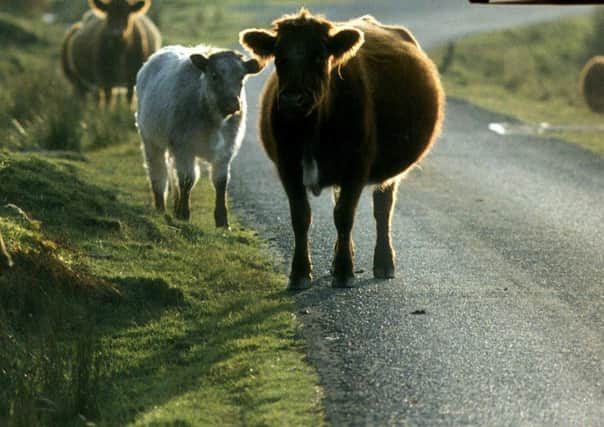Alastair Dalton: Surfaces add to the hazards on rural roads


Fatal crashes on such routes account for three in four of the country’s 200 annual road deaths, with the total also increasing last year for the first time since 2006.
Hazards include speeding drivers, sudden and sharp corners, blind summits, and tractors and animals on the carriageway.
Advertisement
Hide AdAdvertisement
Hide AdBut these challenges to even the most careful motorist are compounded by the bad state of some road surfaces, and vegetation obscuring vital road signs.
Most drivers will have encountered badly rutted or potholed stretches, even on A roads. In addition, trees and bushes masking warning signs have become an increasingly familiar sight.
That means advance notice of potential hazards, such as vehicles emerging from a junction ahead, is lost to drivers.
Ironically, signs which have been grown over include those which warn of hidden entrances.
One of Road Safety Scotland’s campaigns to highlight the dangers of country roads featured “thought graphics”, like those used in the BBC’s Sherlock dramas to illustrate the detective’s observations.
The adverts showed a driver’s-eye view, with words popping up to highlight potential dangers, such as a blind summit, pothole, verge or puddle.
The voiceover stated: “If you do not have time to read the road, you will not have time to react.”
However, motorists won’t have a hope of reading the road properly if someone has put a leaf – or lots of leaves – over the page.
Advertisement
Hide AdAdvertisement
Hide AdThe problem seems to be worst on non-trunk roads, which are the responsibility of local authorities.
It seems that ensuring signs are clearly visible is being neglected in some areas, whether because of spending cuts or simply not being properly included in roadside maintenance programmes.
The same applies to the state of the roads themselves. Scotland may not have suffered a repeat of the harsh winters of 2009-10 and 2010-11, but any type of bad weather can make a poor road worse.
But unless roads are perfectly sealed, heavy rainfall and flooding can cause water to get under the surface and also cause damage. And that could cause even bigger and costlier problems.
In addition, although Scotland as a whole has missed out on another big freeze over the last four winters, parts of the country have been seriously afflicted, such as the south-west.
A new safety campaign directed at drivers is due to be launched next month, but what’s equally needed is more attention on the roads themselves.